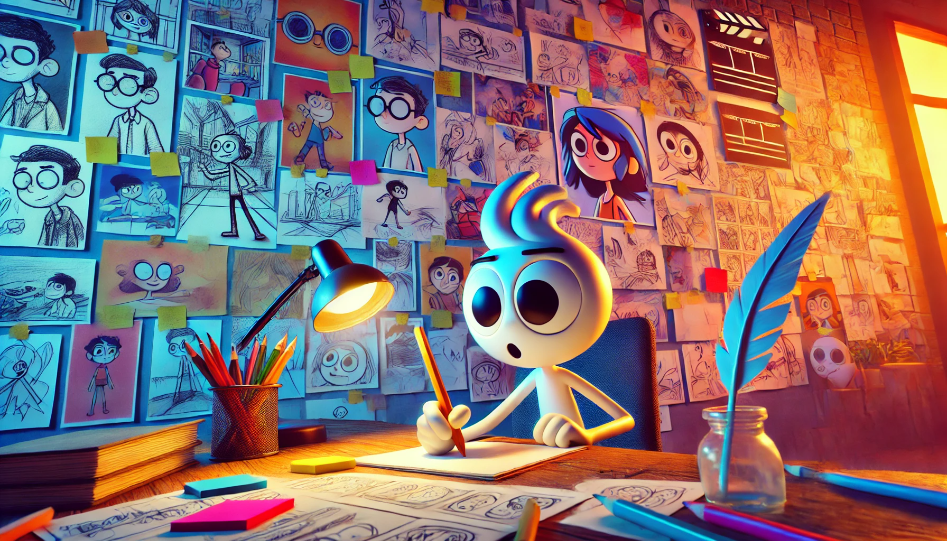The Art of Cartoons and Writing: A Creative Fusion for All Ages
-
Richard Pen
| Monday 29th of July 2024 12:24:33 AM (UTC)

Cartoons and writing, two powerful forms of expression, have captivated audiences for generations. From beloved childhood memories to sophisticated adult entertainment, the fusion of these art forms creates a unique and engaging medium. This article explores the intricate relationship between cartoons and writing, highlighting their impact, techniques, and the endless possibilities they offer to storytellers and audiences alike.
The Evolution of Cartoons
Cartoons have evolved significantly since their inception in the early 20th century. Originally simple black-and-white animations, they have transformed into vibrant, complex productions that cater to diverse audiences. The journey from the first animated short films to today's blockbuster animated movies and TV series showcases the incredible advancements in technology and storytelling.
Key Milestones in Cartoon History
- Early Beginnings: The 1920s saw the birth of iconic characters like Mickey Mouse and Felix the Cat, setting the stage for the golden age of animation.
- Golden Age (1930s-1950s): Studios like Disney and Warner Bros. produced timeless classics such as "Snow White and the Seven Dwarfs" and "Looney Tunes," establishing animation as a mainstream entertainment medium.
- Television Era (1960s-1980s): The rise of television brought cartoons into households worldwide. Shows like "The Flintstones," "Scooby-Doo," and "The Simpsons" became cultural phenomena.
- Digital Revolution (1990s-Present): Advances in computer animation led to groundbreaking films like "Toy Story" and "Shrek." The digital era has expanded the boundaries of what cartoons can achieve, from visually stunning movies to intricate TV series.
The Role of Writing in Cartoons
Behind every successful cartoon is a well-crafted script. Writing for animation requires a unique blend of creativity, humor, and precision. The script is the blueprint that guides animators, voice actors, and directors in bringing characters and stories to life.
Techniques for Effective Cartoon Writing
- Character Development: Creating relatable and memorable characters is crucial. Writers must give characters distinct personalities, goals, and flaws to make them engaging.
- Humor and Timing: Comedy is a staple of cartoons. Writers must master the art of timing, ensuring jokes land perfectly within the animation's rhythm.
- Visual Storytelling: Unlike live-action, cartoons rely heavily on visuals. Writers must think visually, incorporating actions and settings that enhance the story.
- Dialogue: Crafting witty, concise dialogue that captures the essence of each character is essential. Voice actors bring these words to life, adding another layer of depth.
- Plot Structure: A well-structured plot with a clear beginning, middle, and end keeps the audience engaged. Writers often use tried-and-true narrative techniques, such as the hero's journey or the three-act structure.
The Impact of Cartoons on Audiences
Cartoons hold a special place in the hearts of viewers of all ages. They entertain, educate, and inspire, leaving a lasting impact on popular culture.
Educational Value
Many cartoons are designed to educate while entertaining. Shows like "Dora the Explorer," "Sesame Street," and "Bill Nye the Science Guy" use engaging storytelling to teach valuable lessons in language, math, science, and social skills.
Cultural Influence
Cartoons often reflect and shape cultural norms and values. Characters like Superman and Batman have become symbols of justice and heroism, while shows like "South Park" and "The Simpsons" provide satirical commentary on society.
Emotional Connection
The emotional connection viewers form with cartoon characters can be profound. Animated films like "Up," "Finding Nemo," and "Inside Out" explore complex themes of love, loss, and personal growth, resonating with audiences on a deep level.
The Future of Cartoons and Writing
The future of cartoons and writing is bright, with endless possibilities for innovation and creativity. As technology continues to advance, the boundaries of animation will expand, offering new ways to tell stories and connect with audiences.
Emerging Trends
- Interactive Animation: The rise of interactive platforms and virtual reality is paving the way for new forms of storytelling, where audiences can engage with characters and narratives in immersive ways.
- Diverse Voices: There is a growing demand for diverse representation in cartoons. Writers from various backgrounds are bringing fresh perspectives and stories to the forefront.
- Sustainability: As environmental awareness grows, the animation industry is exploring sustainable practices in production, from eco-friendly materials to green energy sources.
Related Articles
For more insights into creativity and writing, check out our articles on Creating a Romantic Mood: Scenes, Objects, Smells, Feels, Words, and Situations, Top 10 Books of Creativity: Unleash Your Imagination, and What is Creativity? Unlocking the Power of Imagination.
Conclusion
The art of cartoons and writing is a dynamic and ever-evolving field that continues to captivate and inspire. By blending visual creativity with compelling narratives, writers and animators create worlds that entertain, educate, and leave a lasting impact on audiences of all ages. As we look to the future, the possibilities for this creative fusion are limitless, promising exciting new adventures for storytellers and viewers alike.
Start the conversation
Become a member of TxtTale to start commenting.
Already a member?
